Number Sense
What is Number Sense?
Number sense is a biggy to unpack but, essentially it is a set of skills that allow students to work with numbers and to understand the ‘why’ and the ‘how’ of mathematics. Number sense refers to our students having a progressive level of understanding about numbers, their size, relationships, and how they are affected by the four mathematical operations.
Students with good number sense are able to make connections between related concepts, adapt mathematical concepts and transfer them.

Number Sense and Counting Beyond 100
What happens when you ask your students to count aloud beyond 100?
Counting to 100 and beyond is a fundamental part of number sense. The chances are that when asked to count aloud, most lower years students will stop at 100. Many students are unsure about counting aloud beyond 100 and you’ll probably find that this is even more evident if you as them to write the numbers on paper.
Lack of Exposure
There are a few reasons why your students may be struggling with counting beyond 100. One significant reason in lowers years is lack of exposure.
Stop for a moment and ask yourself how many of your mathematics posters, number charts and number lines go beyond 100? You’ll probably find that most of the 100 boards and posters that you have on display in your classroom stop at 100.
Solution- Upgrade to Using a Numbers 21-130 Chart
To support your students to develop number sense and count beyond 100, we have created a new Number 21-130 Chart to support your students to count beyond 100.
We have created four different versions of this number chart to allow you to use them in a variety of ways and differentiate to meet your students’ needs. You can choose from the following versions:
- Numbers 21-130 Chart
- Numbers 21-130 Chart – Odd and Even
- Numbers 21-130 Chart – Missing Numbers
- Numbers 21-130 Chart – Missing Numbers From 80
Read on for more brilliant ways to encourage your students to count beyond 100.
Count Objects in Tens
Counting by tens is an essential skill that builds number sense, encourages thinking about number structures, and make counting larger numbers easier. Students with a strong conceptual understanding of round numbers, a ten and the tens place are better prepared to work with two-digit numbers and beyond.
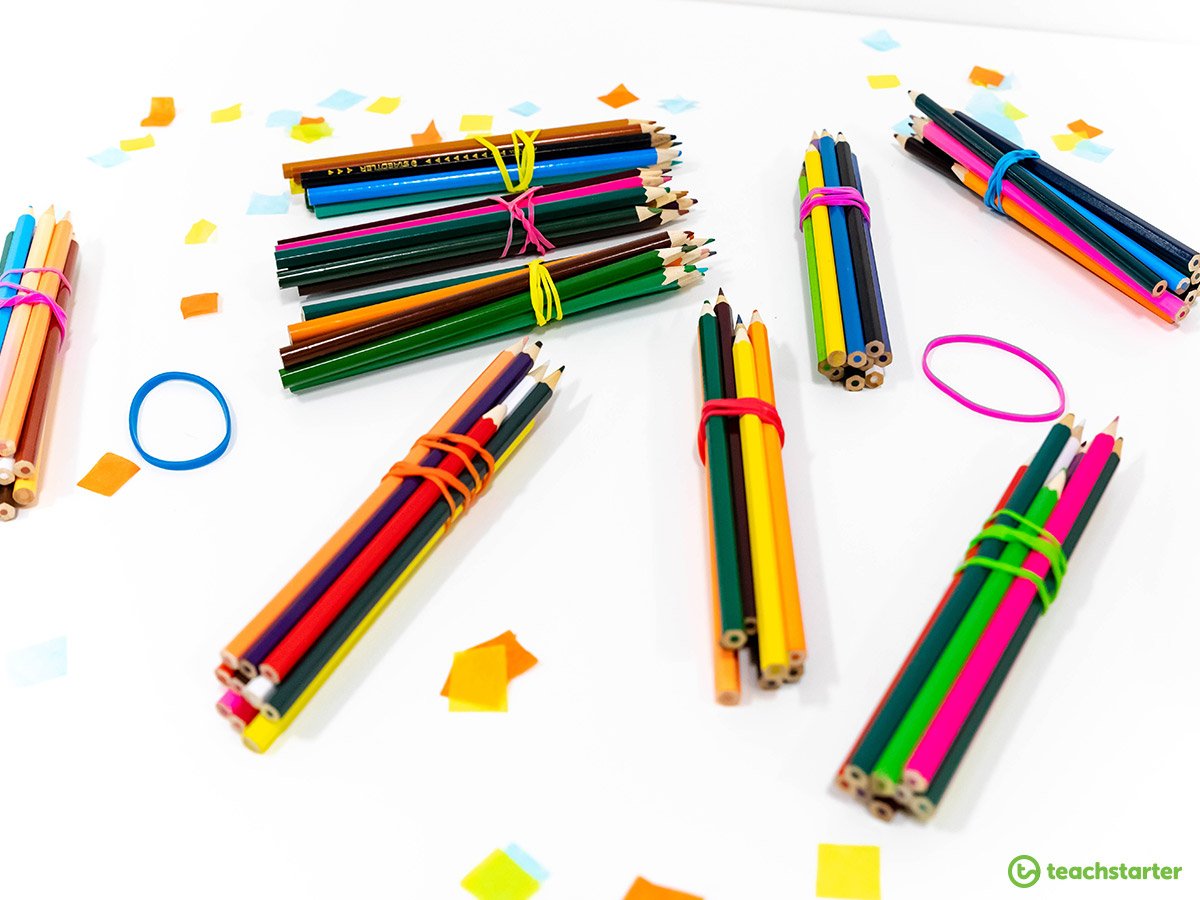
Figuring Out What One Hundred Looks Like
A critical part of counting beyond 100 and developing number sense is a hands-on experience. It is vital that your students develop an understanding of what 100 looks like and how that can differ.
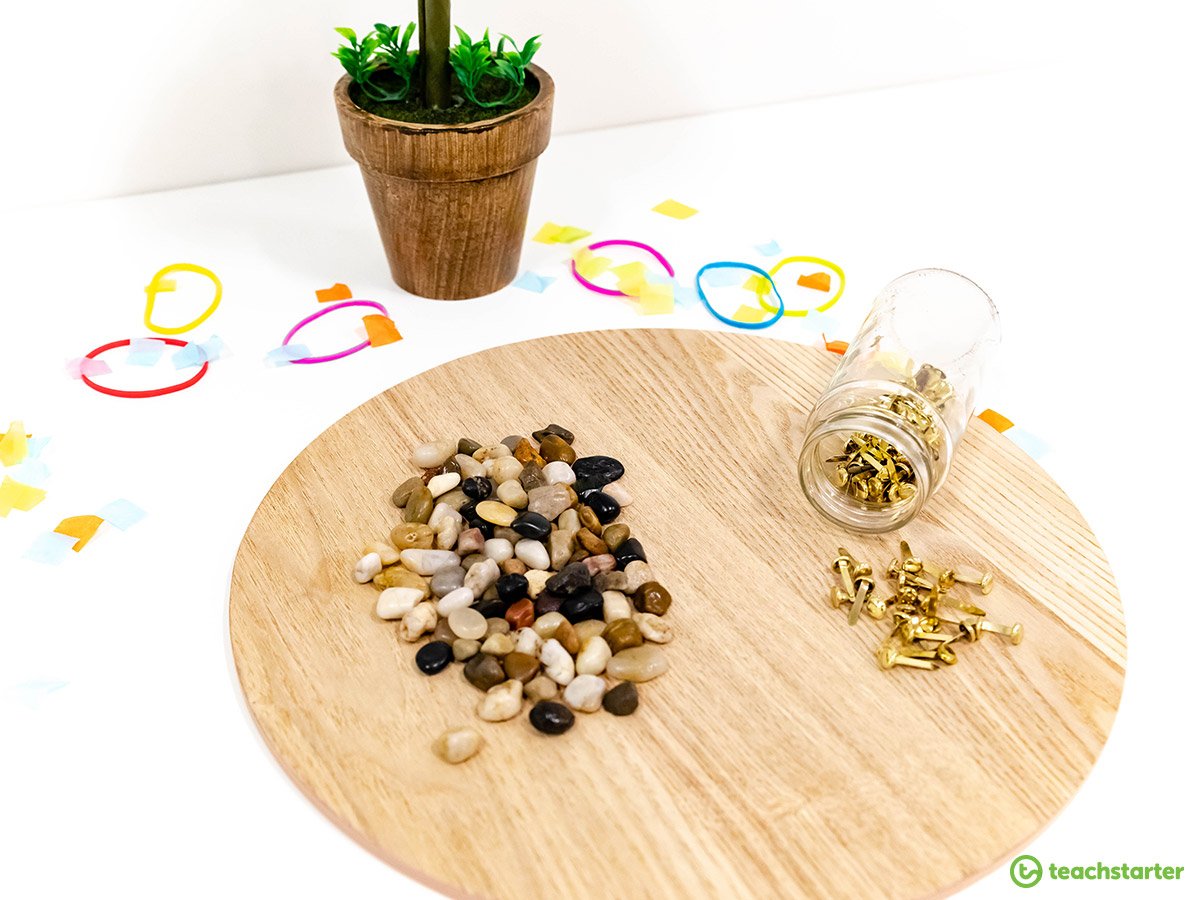
Perhaps the hardest thing about providing your students with the opportunity for your student to count items in excess of 100, is getting your hands on enough concrete materials! You’de be surprised how easy it is to find lots of little things around your classroom! Think paddle pop sticks, pebbles, pasta shapes, pegs and counters.
If you can’t get your hands on a large collection of items, fret not. We have created a Counting Collections in the Hundreds PowerPoint to use in the classroom when exploring efficient ways of counting collections in the hundreds.
Use Brain Boggling Visuals
My five-year-old son, Harvey, recently asked me ‘How big do numbers get?’ My answer was -‘There is no largest number, they go up forever and ever’. What a mind-boggling concept this is!
The best way to show that numbers go beyond 100 is to show your students collections of items bigger than 100… much bigger!
How many hundreds and thousands do you think are in this teaspoon?
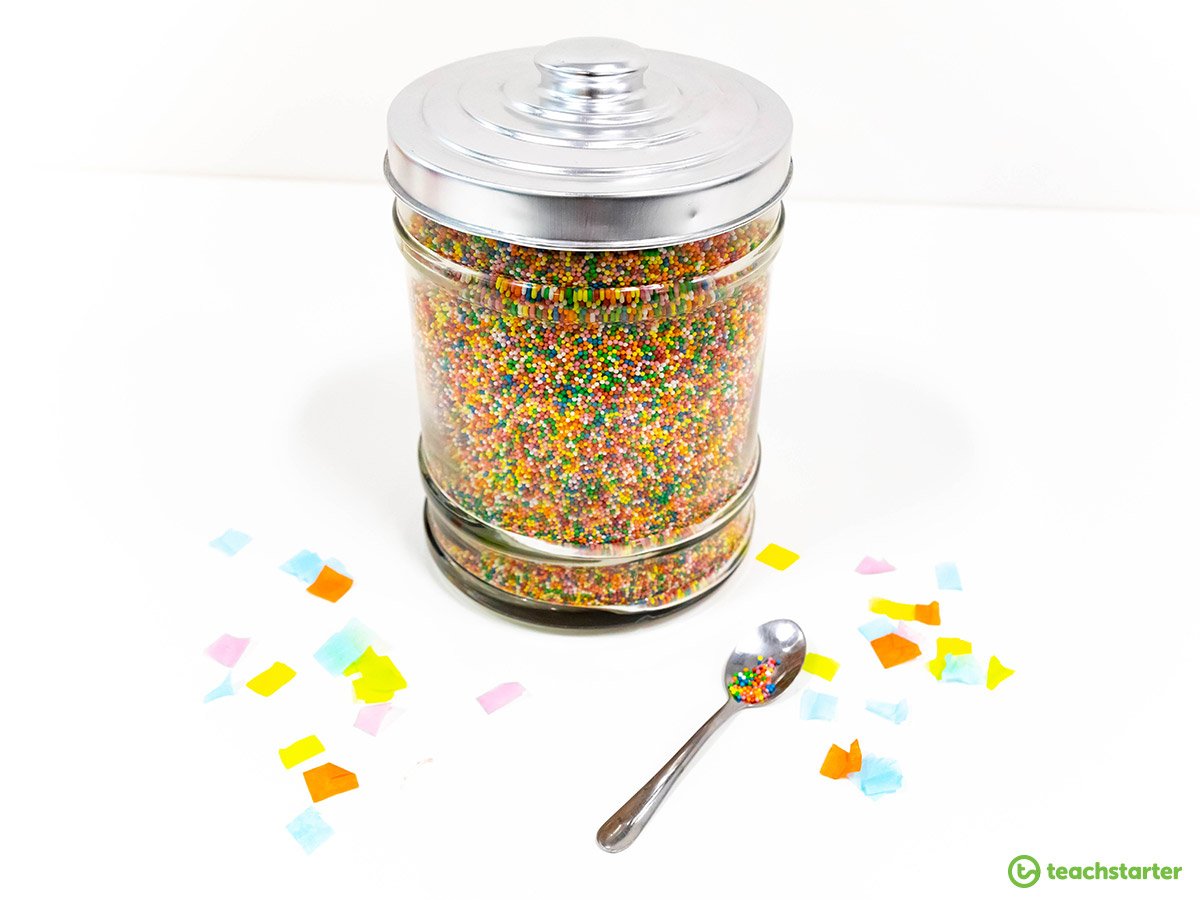
Yes, I did. I counted them. There are exactly 100, hundred and thousands in this teaspoon.
I guess the next thing to do is to ask your students – How many hundreds and thousands do you think there are in the big jar? or How could we make an estimation based on what we know?‘
Extend Number Lines
Set your students up for success by providing them with number lines that exceed 100. You’ve guessed it. We’ve created it. Use our Number Line – 0-120 as an effective way to increase your student’s experience and exposure to numbers beyond 100.
MAB blocks
Another reason why counting beyond 100 can be tricky is that our number system is complex. Suddenly, we have strange zeros appearing in the middle of numbers such as 101 and 102. The only way for your mini mathematicians to comprehend this is to focus on place value and the value of each digit.
I’m sure that you’ve heard this before… use concrete materials! MAB Blocks or base ten blocks are a brilliant concrete item that can be used to help your students to visualise the value of numbers.
Don’t miss out on our collection of Place Value teaching resources and Unit Plans to help your students to develop number sense and to transfer their knowledge and understanding of numbers beyond 100.
[resource:578794][resource:606965][resource:1620142][resource:597490]
High Five a Number
High Five a Number is a fun way to explore numbers beyond 100 and place value as part of your morning routine. Here’s how:
- display a few numbers bigger than 100 at your classroom door. We used a selection of our super cool 0-1100 Number And Word Flashcards – Circles
- provide each student with a 3-Digit Number of the Day Worksheet and place it on their desk
- ask your students to choose one number and high five it as they enter the room
- ask your students to remember their number, settle at their desk and use their chosen number to complete a 3-Digit Number of the Day Worksheet.
Number of the Day
Make it part of your daily practice to explore a Number of the Day.
We used our customisable Teal Chevron – Letters and Numbers Bunting and our time saving 0-1100 Number And Word Flashcards – Circles to create this cool display. With a display this fancy, your students will remember to do Number of the Day even if you don’t!
For the perfect mathematics warm-up activity, we have created a Number of the Day Worksheet for two, three and four digit numbers that will help your students to unpack numbers and improve their number sense. Students are required to:
- write the number in word form
- write the number in digit form
- record the place value of each digit
- write the number in expanded form
- create a number pattern starting with the given number
- represent the number with beads on an abacus
- write a number greater than the given number
- write a number less than the given number.
For more brilliant activities for a Maths Warm-Up read Holly’s blog 23 Maths Warm-Up Ideas for Your Classroom.
Big Numbers in the Real World
Connecting mathematics to the real world is vital. In order for our students to transfer formal mathematical skills and apply them to tasks in real-world contexts, it is crucial that we take time to look at the numbers around us.
Do your class have any particular interests that could be used to spark an interest in big numbers?
Sport
Your students will love to find out where NRL teams are ranking on the ladder and to see the results of the fixtures from this year’s NRL season. Try:
- deconstructing the three digit numbers in the For or Against column
- using mental or written strategies to add together the For and Against column
- covering the Difference column and calculate the difference between the For and Against column.
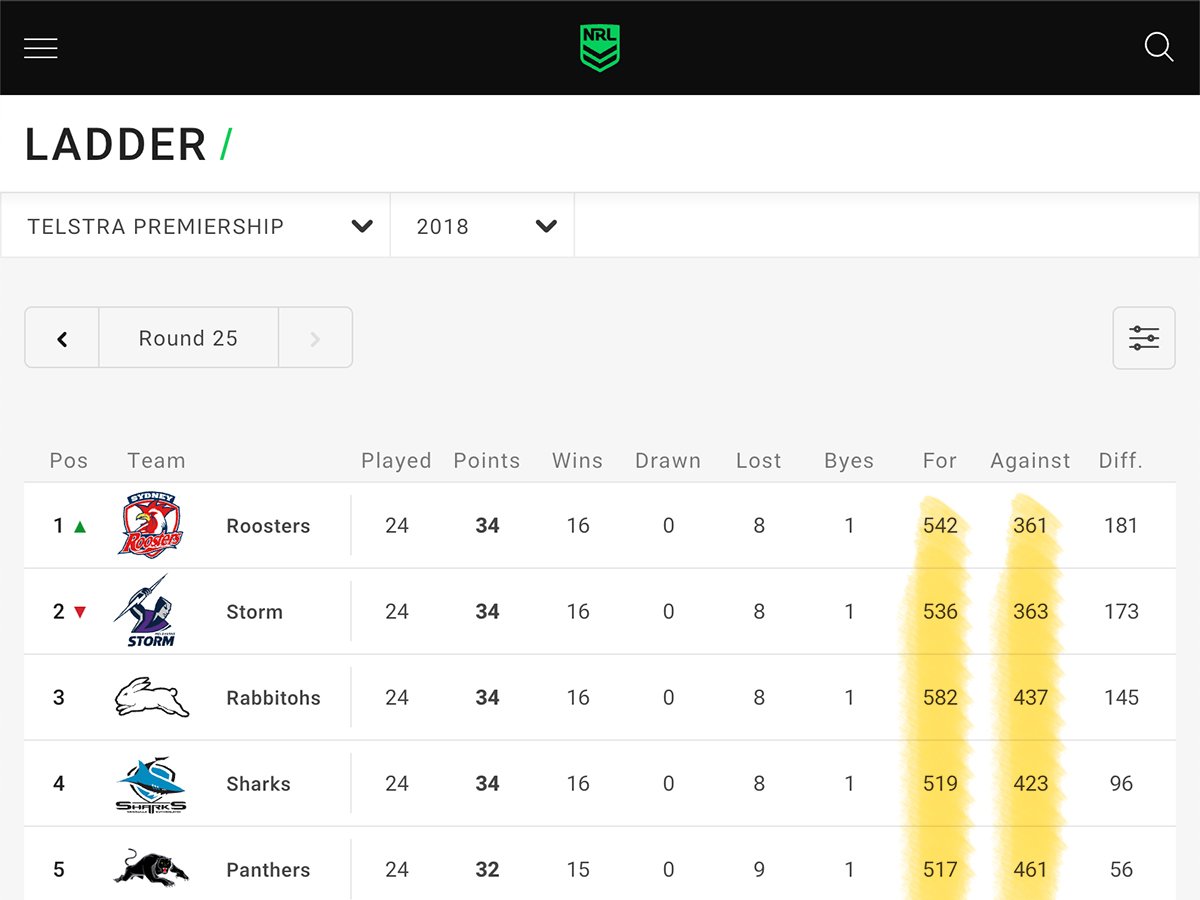 Weather Forecasts
Weather Forecasts
If rugby is not for you and your class, why not explore the numbers found on your national weather forecast web homepage? Your class will love to learn about numbers and counting beyond 100 by investigating weather forecasts, severe weather warnings, observations, flood information, marine and high seas forecasts and climate information.
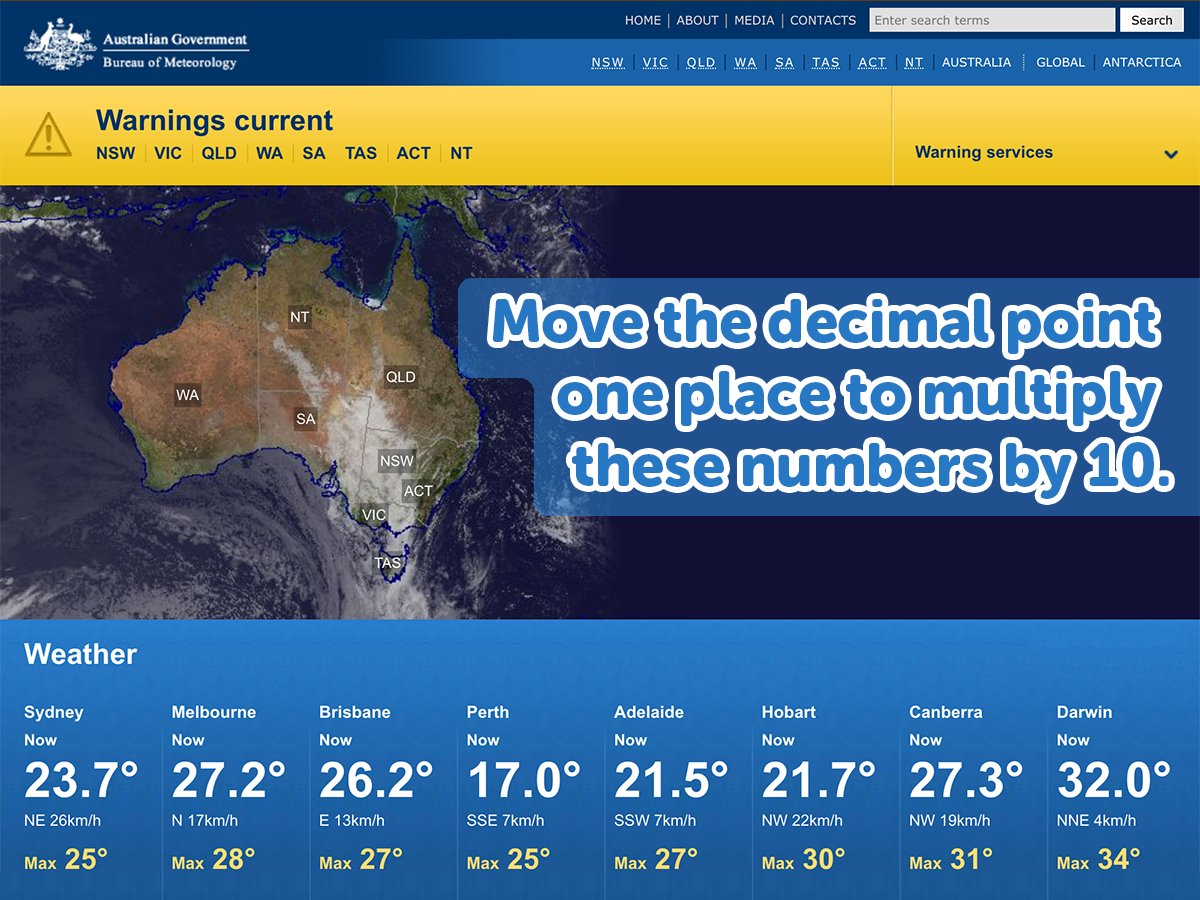
Play Active Games
Check out our brand new teaching resource – Ten Add Bowling Active Learning. All you need is a set of skittles, a flat surface and a ball. We found a Wooden Mini Bowling Set at Kmart. Alternatively, you could collect and reuse ten plastic bottles.
After each bowl, ask your students to order the digit that they have knocked over to create the largest number possible!
For more brilliant active learning ideas check out our Active Learning Resource Pack.
I hope that you are feeling beyond 100% ready to encourage your students to progress to counting beyond 100.
Remember the steps to success in developing number sense are exposure, hands-on experience, real-world context and fun.


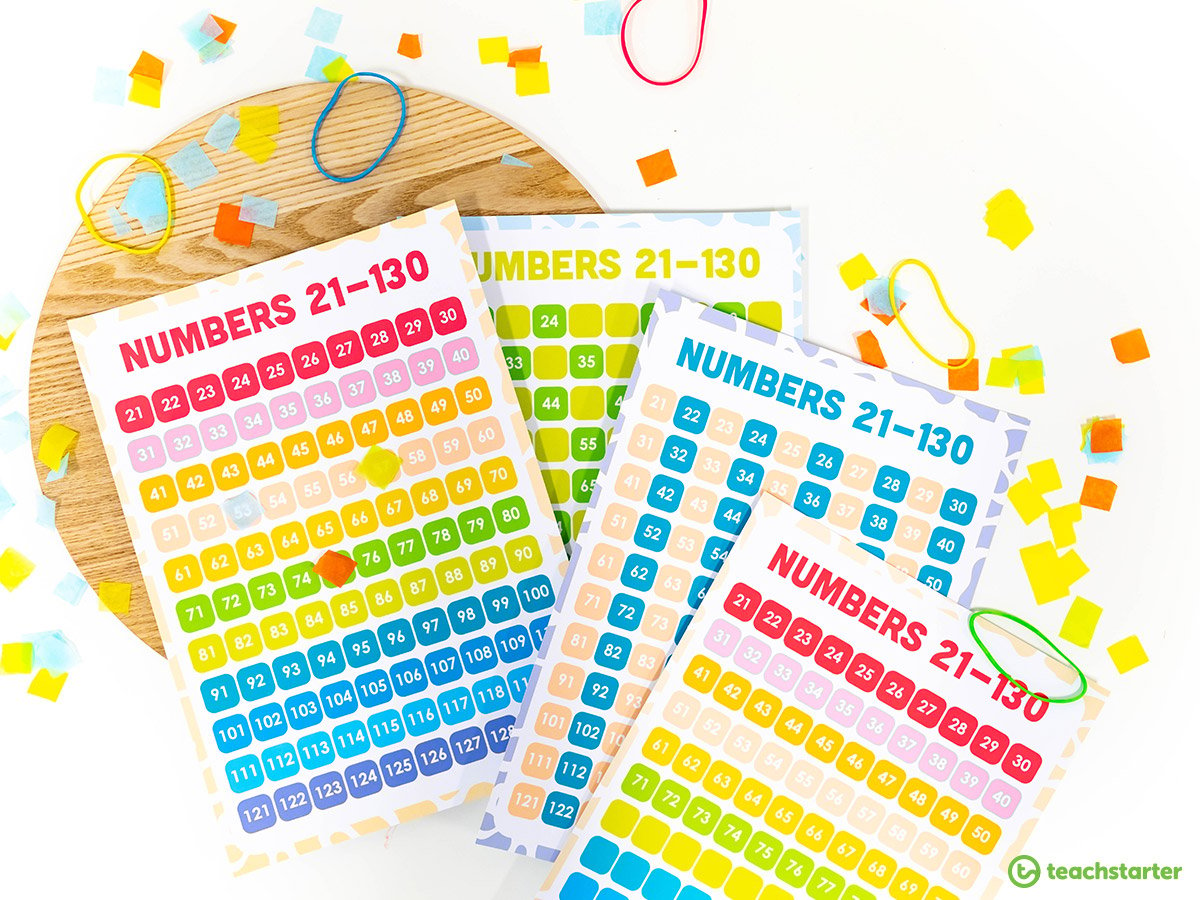
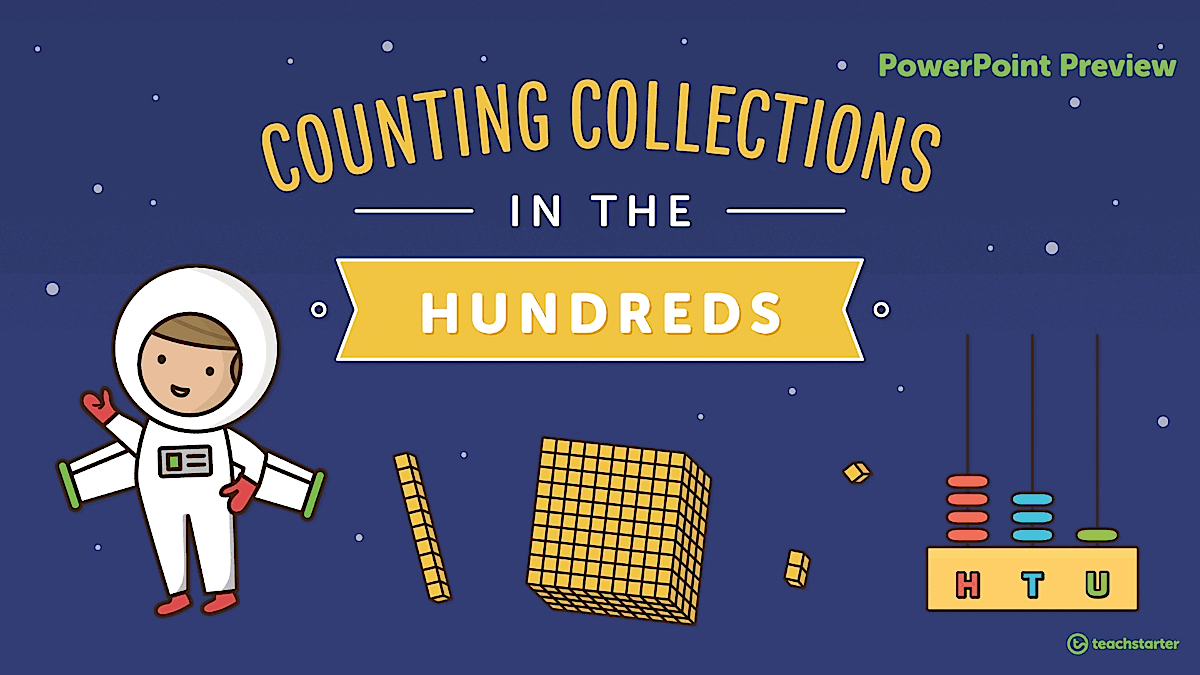
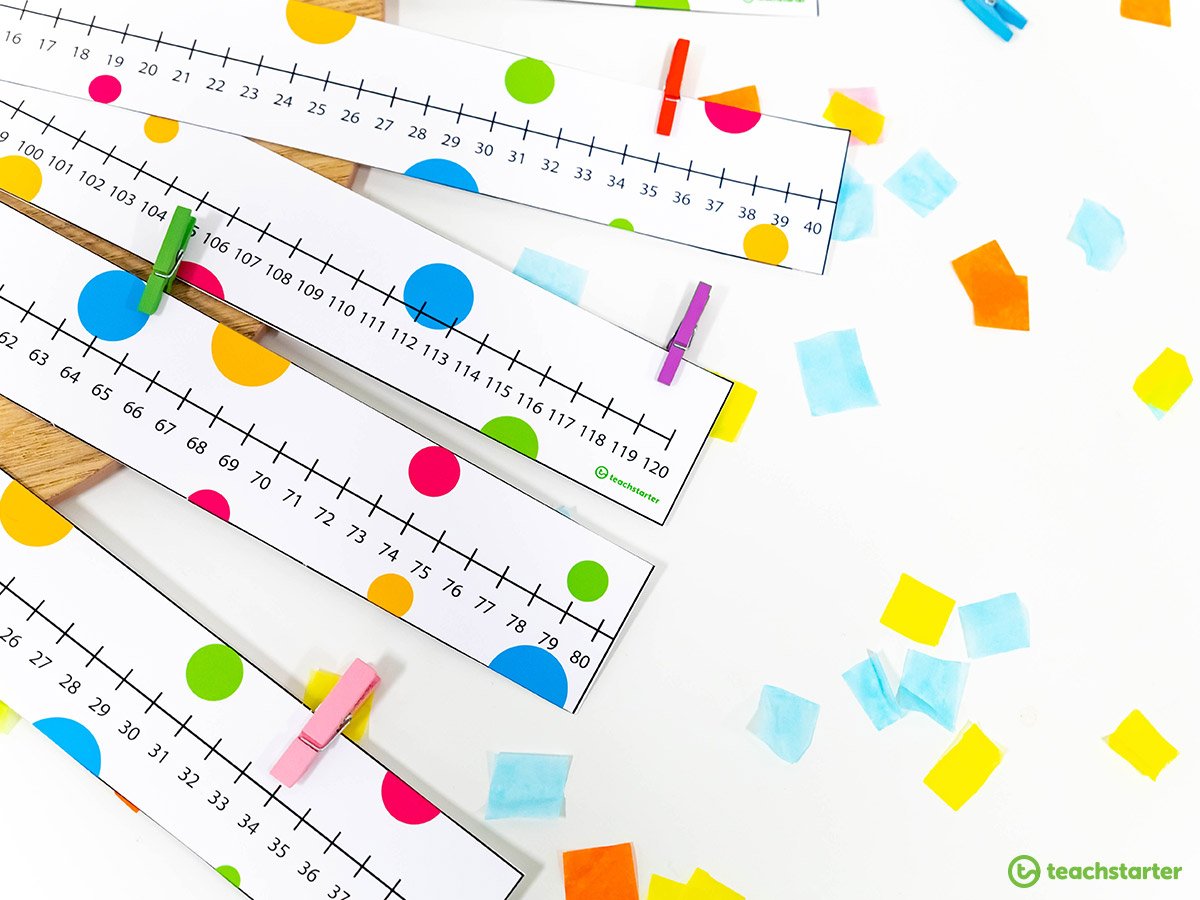

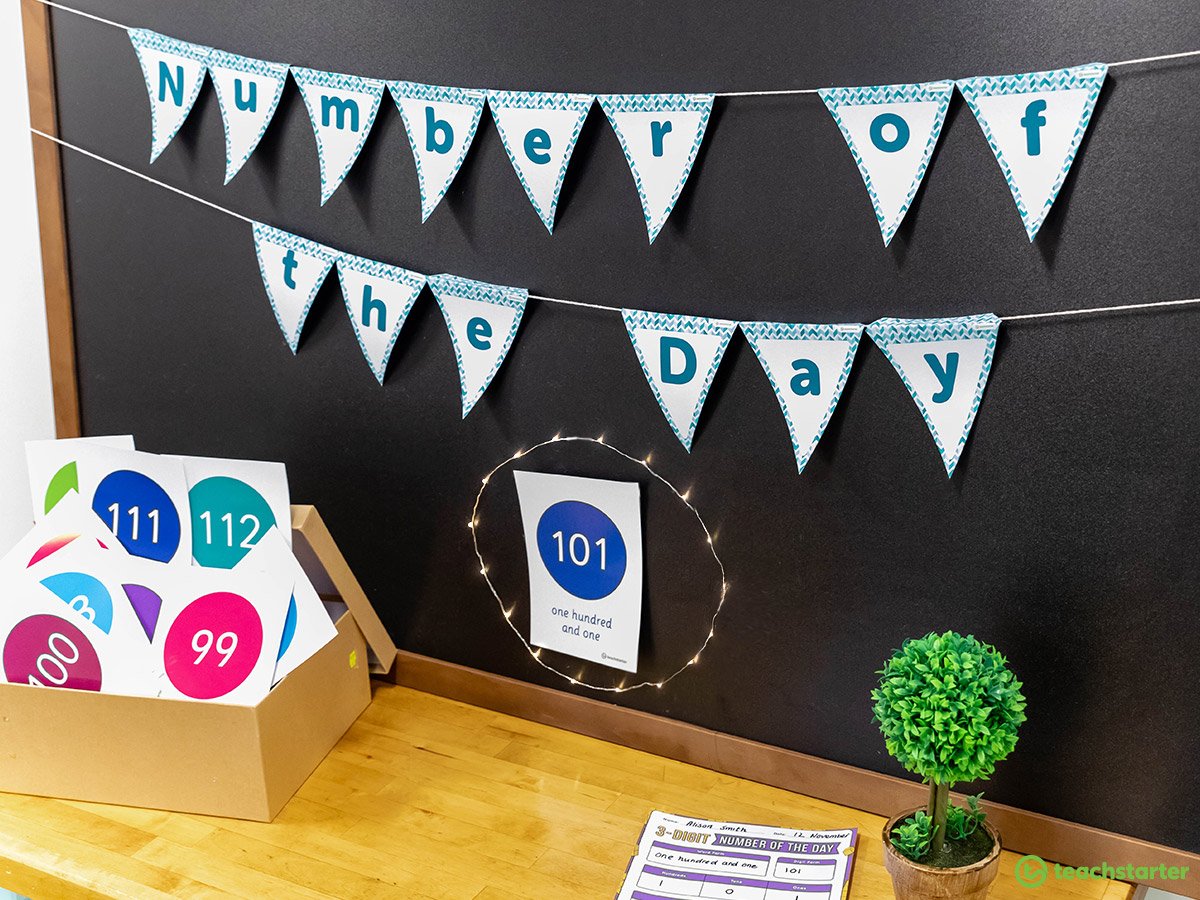
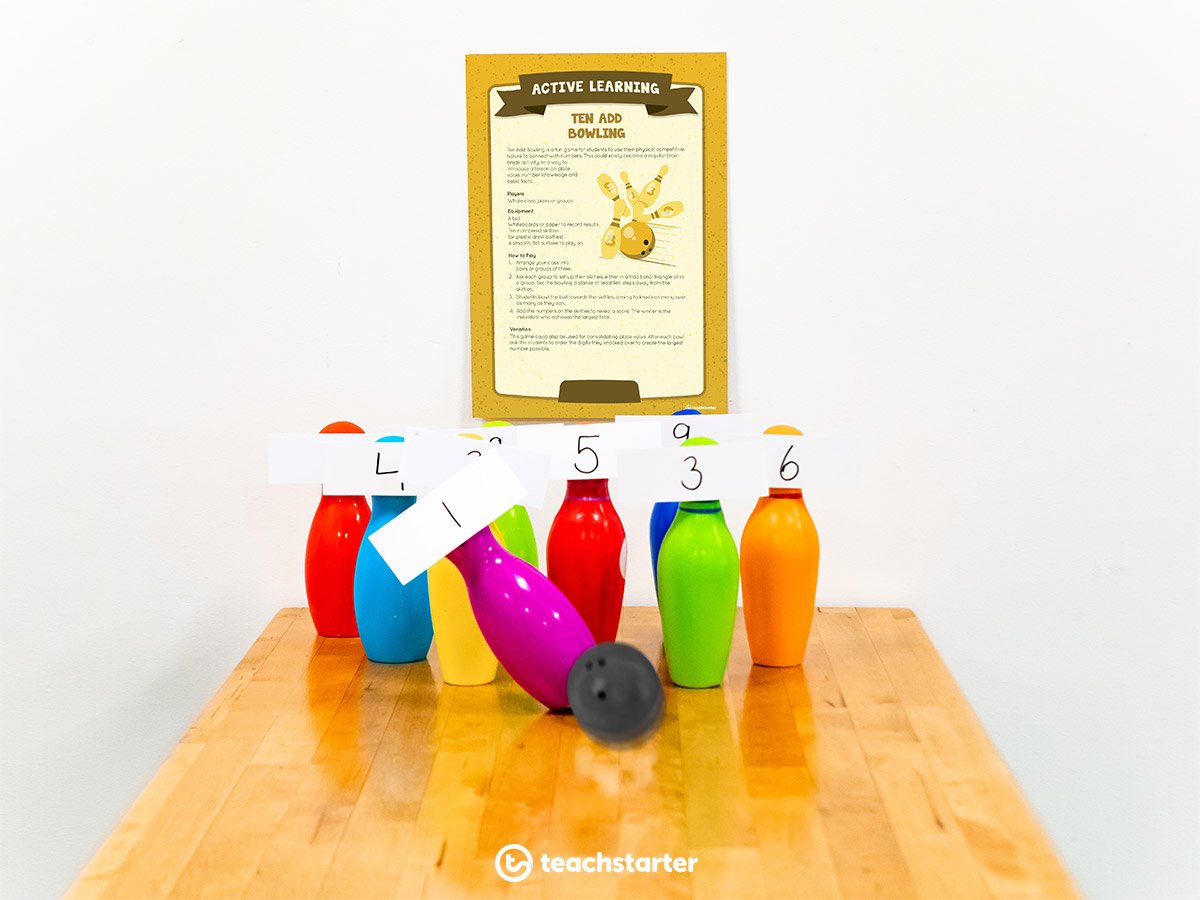






Comments